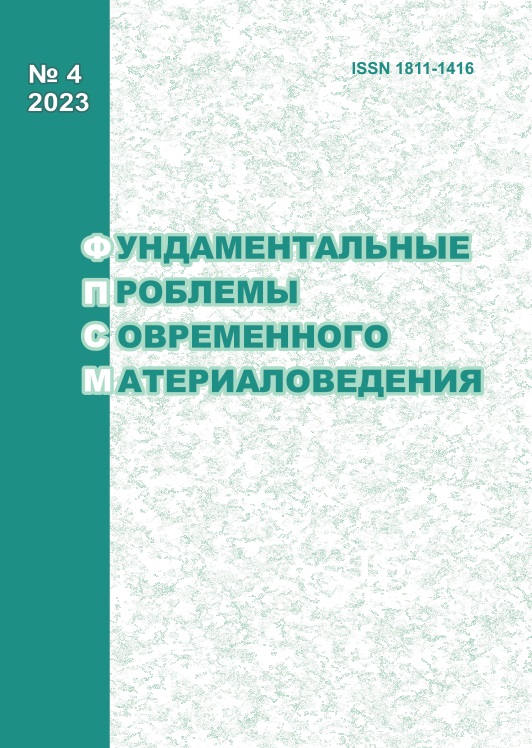MICROSTRUCTURAL CHANGES IN THE Al-3 wt. % Cu ALLOY DURING EQUAL-CHANNEL ANGULAR PRESSING AT ELEVATED TEMPERATURE
10.25712/ASTU.1811-1416.2023.04.008
Keywords:
aluminum alloy, high-temperature equal-channel angular (ECA) pressing, second phases, deformation bands, (sub)grain structure, grain refinementAbstract
The microstructure changes in a coarse-grained binary alloy Al-3 wt. % Cu during equal channel angular (ECA) pressing at T=150 °C ≈ 0.5Tm (where Tm is the melting point of pure Al) were investigated. Prior to pressing, the alloy was heat treated to obtain precipitates of the main strengthening phase Q(Al2Cu) with an average size of approximately 16 nm. As with low-temperature straining, the main feature of ECA pressing of this alloy at 0.5Tm was the development of banded deformation structures in the initial stage of deformation (e=1), leading to fragmentation of the original grains. However, during further ECA pressing, such dislocation structures were transformed into a mixed (sub)grain structure characteristic of hot deformation, accompanied by grain refinement. At e=8, a bimodal microstructure with about 50 % high-angle boundaries was formed in the alloy, consisting of 60 % new grain regions with a size of about 1 μm and unrecrystallized portions of the original grains with subgrains. It has been shown that, in the absence of transition metal dispersoids, the precipitates of the primary strengthening phase Q significantly influenced the processes of deformation energy accumulation and relaxation. As a result, these precipitates controlled the formation of dislocation structures, the occurrence of dynamic recovery, and the migration of (sub)grain boundaries, determining the nature and kinetics of the process of forming a new fine-grained structure.











 Journal «Fundamental’nye problemy sovremennogo materialovedenia / Basic Problems of Material Science»
Journal «Fundamental’nye problemy sovremennogo materialovedenia / Basic Problems of Material Science» This work is licensed under a
This work is licensed under a 
